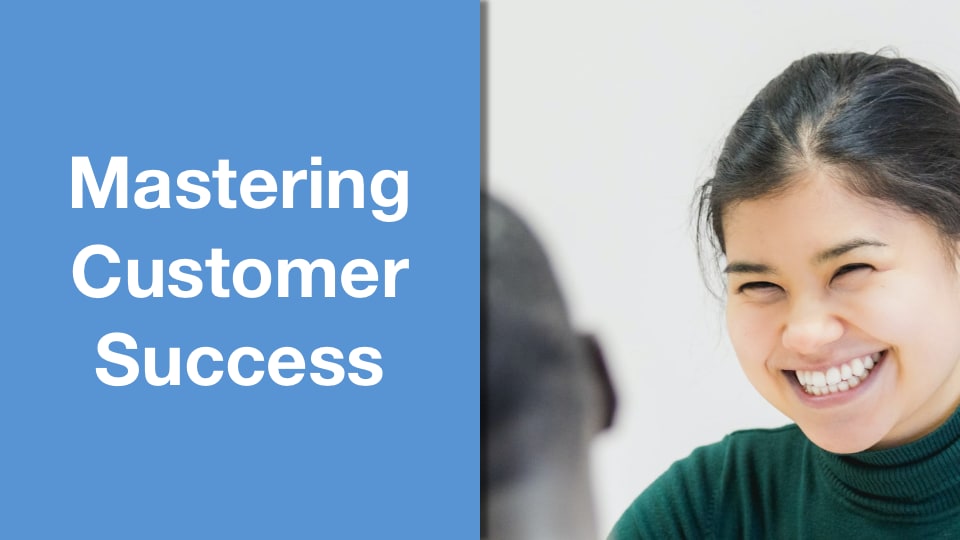Too Big To Fail? If Only Sizing A CSM Team Were That Easy.
How do you size a customer success function? Art, science or a bit of both? Let’s start by illustrating the problem with a hypothetical SaaS company called Conductor who provide a business process automation platform in the cloud.
Conductor have 150 customers and have just ended their financial year with £6,000,000 in ARR. The previous year’s ARR was £4,000,000 so it seems this has been a great year. However Conductor had £1,000,000 in churn across the year and £3,000,000 in new business. Despite being delighted with the growth of the business the CEO is very concerned that their renewal rate was only 75% and tasks the CCO with putting in place a customer success team to dramatically improve this metric.
It’s not unreasonable to conclude that unless something is done the renewal rate in the coming year will stay at 75%. If so Conductor will have churn revenues of £1,500,000, fully half of the new business revenues acquired in the previous year. What’s more a hard to quantify opportunity loss has also been taken, those 25% of customers won’t expand, won’t advocate and may even act as a negative influence in the market.
Given all of this how should the CCO proceed when it comes to setting up and sizing the customer success function?
Let’s review what we know already:
- Predicted churn of £1,500,000
- 150 customers going into the year
- No customer success function
- A current renewal rate of 75%
At this point it might be tempting to dive in and do some quick calculations:
- Assume the renewal target for the next year is 87.5% versus 75%
- If that target is hit then £750,000 in anticipated churn will be saved
- As a starting point a 1:50 ratio for CSMs is acceptable
- The fully loaded cost of a CSM team of 3 will be set at £250,000
The financial case for CSM at this point seems clear? Well, if you accept the mass of underlying assumptions then yes, it’s clear. And I’ve seen this be sufficient justification because, well, something has to be done.
But wouldn’t it be much better to consider what else could influence sizing decisions because it’s so clearly not just a question of how many CSMs you hire.
Conductor also need to think clearly about the engagement model for their CSMs and how the rest of the company needs to be aligned to address the issues underlying the high churn rates. So, other factors to be weighed up as part of the decision making process should include:
- Any already known reasons for churn and how these can be fixed
- Complexity of the product
- Complexity of the domain
- The geographical spread of Conductor’s customers
- The role of other departments in customer success
- Do Conductor need to segment their customer success offering
- The objectives of CSM beyond improving the renewal rate
Not an exhaustive list (we also could consider for example the impact of tooling to help manage the CSM function and help predict clients who will churn) but nonetheless let’s take a quick look at the influence of each of these key factors.
Reasons For Churn
On this topic SaaS companies are always somewhere on a continuum starting at bewildered and ending at fully informed. How is this so?
There are many potential reasons for churn. Without an effective customer success function it’s likely that Conductor are not close enough to their customer base and their day to day use of the product. This makes it tough to properly understand the full range of issues faced and their impact on customer satisfaction.
Some reasons why customers may chose not to renew:
- The product is lacking in promised or essential features
- Too many core features are poorly or partially implemented
- The platform is unreliable and suffers from frequent outages
- The vendor is disrupting a market but not providing their customers with enough support to enable them to make the changes needed in the way they operate
- The product is overly complex to use
- The least effective customers have no way to learn from the most effective customers and so best practices do not spread easily
- Support tickets far too long to resolve
- When customers have questions, issues, need help or some training they find it hard to engage the vendor effectively
And so on. The important point here is customers may be churning for reasons that your customer success team may be able to surface but cannot address: for example frequent outages. Given this knowing why customers churn before you make significant investments in a customer success function or attempt to size it correctly makes good sense.
Product Complexity
If your product is complex to implement or to use your customers will require more help, both in the initial setup and with the deployment and ongoing on-boarding and support of the user base. Furthermore the people charged with the care and maintenance of the system are likely to need more support. While it is probably not a linear relationship the more challenging your product is to fully adopt the more assistance you will need to provide and this will impact your customer success strategy and the size of an effective team.
Domain Complexity
If you are selling an expenses system you are dealing with a well understood domain with relatively speaking a small amount of complexity, domain specific language and theory. On the other hand if like Conductor you are dealing with business process automation your are dealing with a much more complex domain, that has a language, theory and toolset that’s very specific to the domain.
In the former case hiring CSMs with domain knowledge isn’t so important. Most people can absorb the necessary domain knowledge quickly and be credible when providing CSM services to your customers.
In the latter case to be credible as a vendor offering CSMs services you may have to hire individuals who understand the domain and may even be experienced practitioners. This will be a great point of discussion as you plot your customer success strategy.
The important point to grasp here however is the implication this has for sizing. Solutions in a complex and/or niche domain are likely to require more support from customer success than those in a something straightforward like expenses management. Your product hopefully does a great deal to simplify or remove difficulty from complex domains but your customer success discussions will still almost certainly be more detailed, more specific and more demanding than those in simple domains.
Geography
A start-up with all of its customers in London faces a different customer success challenge from one with a global customer success team. No only do you have a time-zone challenge to manage, if your customer success strategy calls for face to face contact you also have to account for how you place people adjacent to your customers.
Company Role In Customer Success
Good customer success is a team effort. Everyone in a SaaS company, CEO down, has a role to play. I’ve covered this here so won’t repeat myself suffice to say if you expect your CSM team to carry the entire load of your customer success efforts you’ll need more of them and you will be less successful. A focus on how the entire company plays into your customer success strategy is a vital input when sizing your CSM team and designing your engagement model.
Segmenting Your Customer Base
By ARR, by need, by stage in the customer journey, by geography, by vertical, some combination. Segmenting your customers for customer success engagement can be done in many ways.
If a company makes a choice to segment their customer base an impact on sizing is likely. Using ARR as an example, rather than a CSM having 25 clients of all shapes and sizes they may set up their model to have, for example:
- For ARR < £50,000 : 1 CSM to 50 customers
- For ARR > £50,000 And < £500,000 : 1 CSM to 20 customers
- For ARR > £500,000 1 CSM to 5 customers
Depending on the nature of the client base a segmentation such as the one above will influence both CSM team size and engagement model.
Objectives For Your Customer Success Team
Seems odd that this is last? Shouldn’t we start with objectives. Yes and no in this case. Already established is the key initial driver for the CSM team at Conductor: improving the company’s renewal rate. The question at this point is where else might Conductor want their CSM team to focus:
- Creating advocates from their customer base
- Pre-sales activity
- Generating expansion revenues
- Creating/evolving the customer success toolset
All of these activities take time and therefore have an impact on the amount of time a team of a given size can spend engaged in activities that support customers in getting the optimum outcomes from their use of your product. If the strongest predictor of renewal is the delivery of the intended value producing outcomes of using your software then any effort that takes your CSMs away from that activity has to be considered in light of the potential impact it will have on renewals.
Not to say such decisions are final. Conductor may decide in the early stages on a 100% focus on driving great customer outcomes to significantly improve the renewal rate. Once the churn rate is at or approaching target levels they may introduce advocacy and expansion objectives.
Summing Up
In this article we’ve mainly looked at a company considering setting up a CSM function. All of the above applies however to companies with an existing CSM team. They too absolutely want to ensure their team is properly sized and delivering optimum value to the business. As the company evolves the CSM team needs to keep pace and adapt in both size and operating model to the ever changing conditions faced by the company.
To properly size your CSM team you need to ensure you have a:
- Well constructed financial model
- Clear idea of the current objectives of the team
- Good understanding of product and domain complexity and how this will influence your engagement model
- Plan for the role the rest of your company will play in customer success
- Clear picture of the impact of geography.
With so much to consider it’s no surprise some companies considering a CSM function stop at ‘x number of CSMs will save us y in ARR, let’s do it.’ Moreover, if like Conductor churn is an issue there will be an urgency to get going as soon as possible. However, there’s much more to consider and doing so will pay dividends in ensuring your employ the right size of team, doing the right things, in the right way, right from the start.



